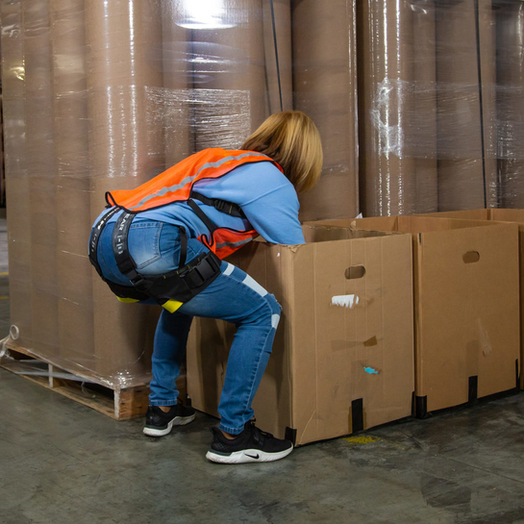
SOFT
FINE
GOODS
CONSULTING
BACK TO THE
WEARABLE TECH
PORTFOLIO
HEROWEAR'S APEX 2
The Apex 2 is HeroWear's second-generation back exosuit, engineered to reduce strain on the
lower back during heavy lifting by utilizing elastic bands that function as supplemental back muscles.
MY ROLE:
HeroWear licensed a patent on which I am listed as an inventor. I played a key role in research and development, particularly in thermal comfort optimization, and made significant contributions to the design of exosuits for the U.S. Army. Much of this design and development work directly informed the creation of the Apex 2.
DESIGN PROCESS:
As the Apex 2 exosuit evolved from research to commercial product, I worked directly with HeroWear’s R&D team to transition our lab innovations into scalable, field-ready features. My primary focus was on thermal comfort, gender-inclusive fit, and intuitive usability — all while preserving the suit’s ability to deliver powerful, passive back support.
One of my key contributions was redesigning the thigh sleeve to dramatically reduce surface area while improving load distribution and adaptability. I developed a dynamic system that could contour to both men’s and women’s legs, adapting to muscle movement while remaining secure under load. I also introduced a mechanism to loosen the thigh sleeves on demand when not in use — increasing breathability and wearer comfort during low-activity periods.
Beyond the leg system, I optimized the harness for comfort and modularity. I devised abrasion-reducing foam layering techniques, supported switch placement research, refined the sternum strap fit, and improved the MOLLE integration along the shoulder straps. I also contributed the yoke-to-backplate attachment method now used in Apex 2.
This iterative work was grounded in years of exosuit R&D and extensive user feedback from lab to field — with final designs reflecting both technical precision and real-world performance needs.
DESIGN PHILOSOPHY:
My philosophy for Apex 2 was simple: comfort isn’t optional — it’s the key to compliance. A wearable support system only works if users want to wear it, day in and day out. That means the suit must disappear into the wearer’s experience — no hot spots, no rigid compromises, no gender-specific sizing limitations.
I focused on solutions that were:
-
Soft, but structurally intelligent
-
Adaptable, but not bulky
-
Comfortable, without sacrificing power
Instead of forcing the body to adapt to the suit, I made the suit adapt to the body — dynamically, intuitively, and with minimal footprint. From thigh sleeve ergonomics to strap architecture, my work centered on making a high-performance tool feel like second skin.






